As Philae temporarily loses touch with Rosetta, we leave you with this artist’s impression of the lander on the surface. Thanks for joining us on this truly amazing day for space exploration.
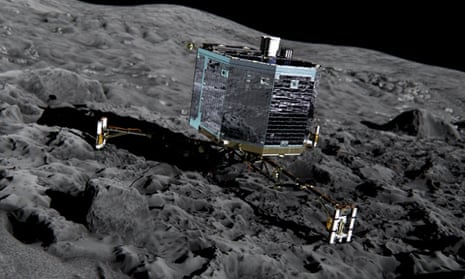
The European Space Agency has landed a spacecraft called Philae on a comet. Stuart Clark was at Esa mission control in Darmstadt
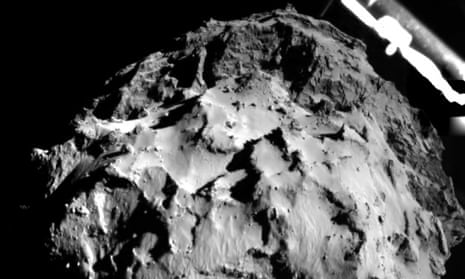
As Philae temporarily loses touch with Rosetta, we leave you with this artist’s impression of the lander on the surface. Thanks for joining us on this truly amazing day for space exploration.

Philae may have landed not once but twice – that’s the final message from Esa this evening.
According to Stephan Ulamec, Philae Lander Manager, DLR, the lander team believe that Philae may have bounced from the surface and settled again in a slightly different place.
Engineers know that the anchoring harpoons did not fire. It is also known that the communications link to Rosetta failed intermittently in an irregular pattern shortly after the landing but always immediately re-established itself.
However, science data has been received and is currently being processed, but the promised first panorama from the surface has not been released.
Rosetta is now out of touch with Philae as the orbiter has dipped below the horizon of the comet. The link to Philae was lost a little earlier than expected but this is probably because a hill or boulder was in the way of the line of sight.
Right now, Philae should be working through its first automatic sequence of science experiments. Contact will be re-established through Rosetta later tonight, and the data downlinked.
There will also be more telemetry to assist the engineers in understanding the exact sequence of events during the landing.
We will know more tomorrow.
Francois Hollande enjoying a 3D presentation about the mission at the Cite des Sciences in Paris earlier today.
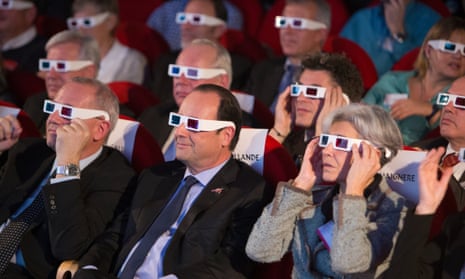
Our #GoogleDoodle celebrates the #CometLanding, congrats to the @esa! http://t.co/kHP4o77seU
— Google UK (@GoogleUK) November 12, 2014
Apologies – those last two images were taken by Rosetta not Philae.
Comets are the original source of Earth's water. That wee lander is now in position, poised to re-write what we know about ourselves.
— Chris Hadfield (@Cmdr_Hadfield) November 12, 2014
The press briefing has been delayed until 19:00 GMT.
Rubble-filled depressions appear in sharp relief in this image from Rosetta the Philae lander, taken as it descended . One, just to the right of centre in the lower part of the image, is almost circular. Pits like this may be the source of the comet’s gas vents, which become progressively more active as it approaches the sun.
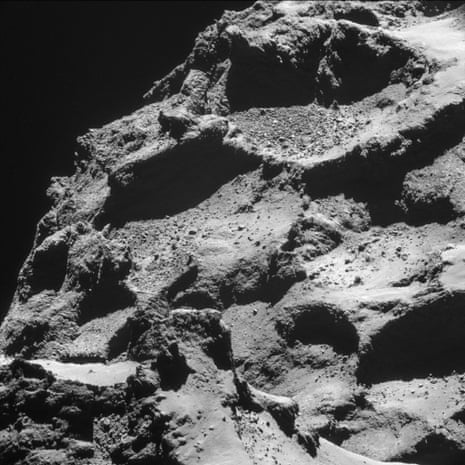
Where is the comet? Between the orbits of Mars and Jupiter, as this graphic shows.
The Philae lander Rosetta took this picture 10 km above the ‘body’ of the comet as it descended towards its landing site.
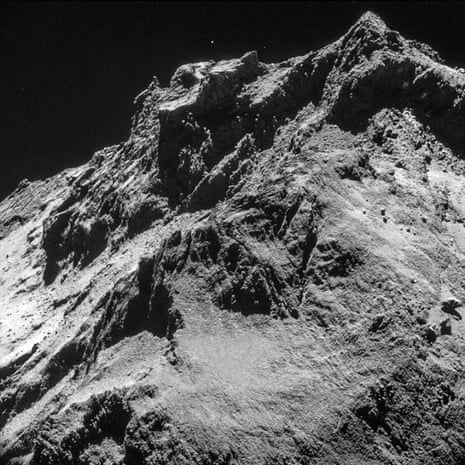
Details of the lander’s status has just been promised for 18:30GMT press briefing. Watch the livestream above.
For a summary of today’s historic events, read this Guardian news piece by our astronomy blogger Stuart Clark and science editor Ian Sample.
Comments (…)
Sign in or create your Guardian account to join the discussion